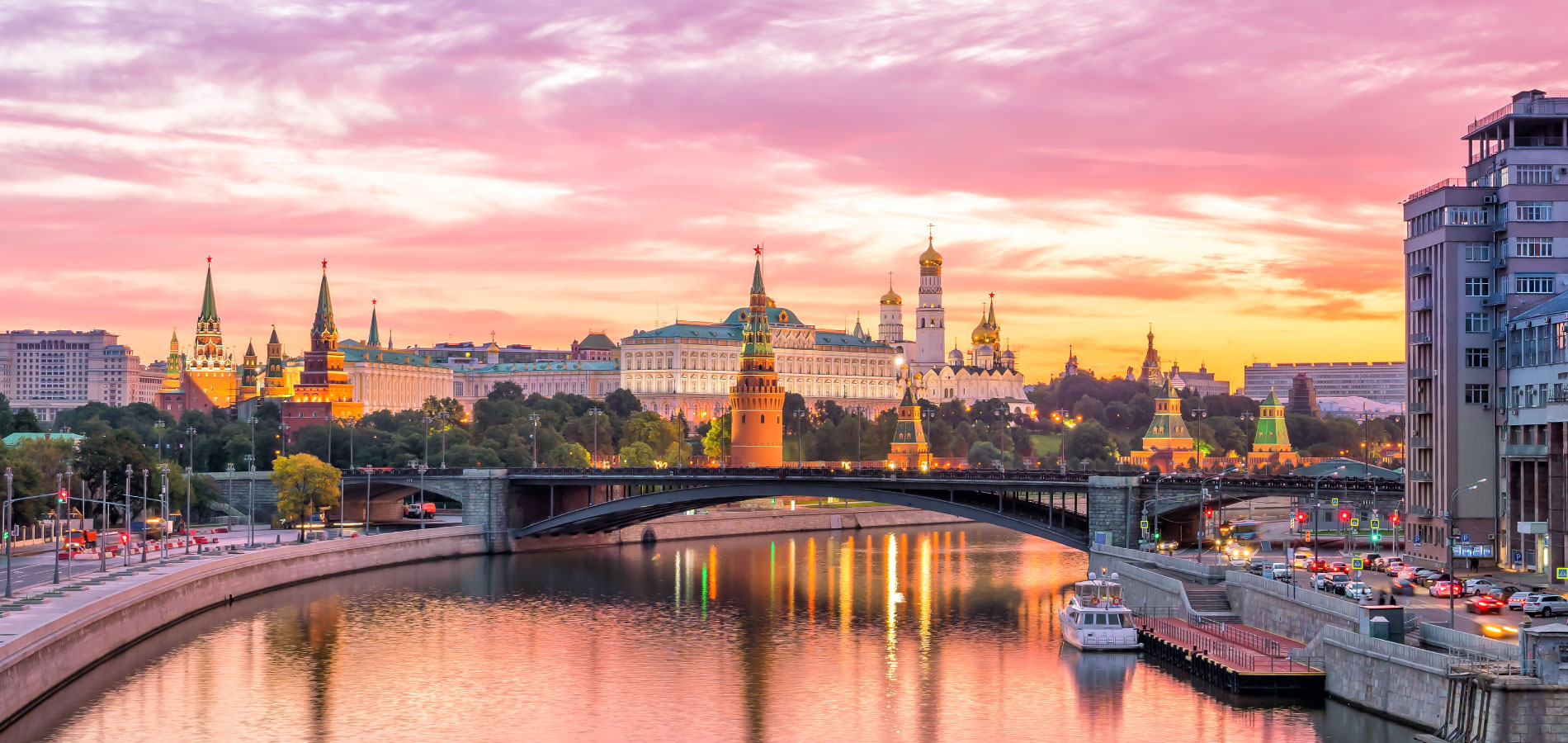
Russia, or the Russian Federation, is a country spanning Eastern Europe and Northern Asia. It is the largest country in the world by area, covering over 17 million square kilometres, and encompassing more than one-eighth of Earth’s inhabited land area.
Tourism in Russia has seen rapid growth since the late Soviet times, first domestic tourism and then international tourism as well. Rich cultural heritage and great natural variety place Russia among the most popular tourist destinations in the world. Not including Crimea, the country contains 23 UNESCO World Heritage Sites, while many more are on UNESCO’s tentative lists.
Major tourist routes in Russia include a travel around the Golden Ring of ancient cities, cruises on the big rivers including the Volga, and long journeys on the famous Trans-Siberian Railway. Diverse regions and ethnic cultures of Russia offer many different foods and souvenirs, and show a great variety of traditions, including Russian Maslenitsa, Tatar Sabantuy, or Siberian shamanist rituals. In 2013, Russia was visited by 33 million tourists, making it the ninth-most visited country in the world and the seventh-most visited in Europe.
1. Russia is the largest country in the world and bigger than Pluto.
2. The name of Russia’s famous Red Square has nothing to do with communism
3. Russia used the Julian calendar until 1918
4. Russia and the US are just 4km apart at the nearest point
5. Russian cosmonaut Yuri Gagarin was the first human in space
6. Two Russian cosmonauts have spent more time in space than any other person
7. Russia is home to some 20 percent of the world’s trees, and one-fifth of the world’s freshwater is in Lake Baikal.
8. The word tsar comes from the Latin word ‘caesar’.
9. The Russian Revolution wasn’t one but two revolutions.
10. A clock in St Petersburg marks the exact moment that Russia became communist.
11. There are over 100 languages in Russia.
12. Russia has domesticated a species of fox.
14. Over 70 cats roam the 14 miles of marbled corridors of The Hermitage in St Petersburg
15. Russia has the biggest nuclear arsenal in the world
19. Russians are the world’s fourth biggest lovers of alcohol, knocking back 15.1 litres per person a year
21. The famous Trans-Siberian railway is the longest single railway in the world.
23. More billionaires live in Moscow than any other city in the world after New York.
25. The Russian village Oymyakon is the coldest village on earth.
The best time to visit Russia is during summer (June to August), with its long, light evenings and balmy temperatures of 21°C-25°C. It’s also the ideal — though most popular — time for those wishing to visit Mongolia on the Trans-Siberian Railway.
1. Lake Baikal
2. Moscow
3. St. Peterburg
4. Altay
5. Sochi
6. The Russian Tundra
7. Peterhof
8. Olkhon Island
9. Petropavlovsk-Kamchatsky
10. Vladivostok
11. Anapa
12. Novosibirsk
Apart from these cities the mainland shows its best side in the well-preserved Classical ruins of Corinth, Olympia and Delphi, the frescoed Byzantine churches and monasteries at Mount Áthos, Metéora, Ósios Loukás, Kastoriá and Mystra, the massive fortified towns of Monemvasiá, Náfplio and Methóni, the distinctive architecture of Zagóri and the Máni, and the long, sandy beaches of the Peloponnese and the Pelion peninsula. Perhaps more surprisingly, the mainland mountains offer some of the best and least-exploited hiking, rafting, canyoning and skiing in Europe.
Out in the Aegean or Ionian seas, you’re more spoilt for choice for where to go. Perhaps the best strategy for first-time visitors is to sample assorted islands from nearby archipelagos – Crete, the Dodecanese, the Cyclades and the northeast Aegean are all reasonably well connected with each other, while the Sporades, Argo-Saronic and Ionian groups are best visited in single trips. If time and money are short, the best place to head for is well-preserved Ýdhra in the Argo-Saronic Gulf, just a short ride from Pireás (the main port of Athens), but an utterly different place once the day-cruises have gone. Similarly, Skýros, remotest and most unspoilt of the Sporades, is a good choice within modest reach of Athens or Thessaloníki. Among the Cyclades, cataclysmically volcanic Santoríni (Thíra) and Mýkonos with its perfectly preserved harbour-town rank as must-see spectacles, but fertile, mountainous Náxos, dramatic cliff-sided Amorgós or gently rolling Sífnos have life more independent of cruise-ship tourism and seem more amenable to long stays. Crete could (and does) fill an entire Rough Guide to itself, but the highlights here are Knossos and the nearby archeological museum in Iráklion, the other Minoan palaces at Phaestos and Ayía Triádha, and the west in general – the proud city of Haniá, with its hinterland extending to the relatively unspoilt southwest coast, reachable via the fabled Samarian gorge. Rhodes, with its unique old town, is capital of the Dodecanese, but picturesque, Neoclassical Sými opposite, and austere, volcanic Pátmos, the island of Revelation, are far more manageable. It’s easy to continue north via Híos, with its striking medieval architecture, to balmy, olive-cloaked Lésvos, perhaps the most traditional island in its way of life. The Ionian islands are often dismissed as package-holiday territory, but their Venetian-style architecture, especially evident in Corfu, and neighbouring Paxí, make them well worth seeking out, especially on a journey between Greece and Italy.
The New Year: 31st Dec 2021
Orthodox Christmas: 7th Jan 2021
Maslenitsa Festival: 8th Mar to 14th Mar 2021
Reindeer Herder’s Festival: 23rd Mar 2021
Russian Orthodox Easter Week: 2nd May 2021
Moscow Golden Mask Festival: NA
Victory Day: 9th May 2021
St Petersburg White Nights Festival: 26th June to 27th August 2021
1. Blini (Russian pancakes)
2. Pelmeni
3. Beef Stroganoff
4. Syrniki
5. Kasha (Porridge)
6. Borscht
7. Okroshka
8. Pirozhki
9. Shashlik
